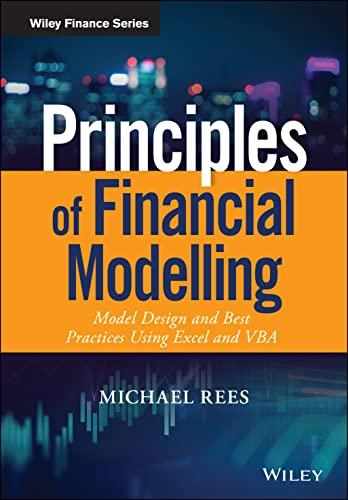Question
TRUE OR FALSE? Only the answers, no explanation is needed. Answer all of them on 30 minutes please. Question 57 Hedge Fund Philosophies: Hedge fund
TRUE OR FALSE? Only the answers, no explanation is needed. Answer all of them on 30 minutes please.
Question 57
Hedge Fund Philosophies: Hedge fund philosophies can oftentimes be characterized as macro &
managed futures, relative value, equity biased, and event driven. Hedge funds have a long / short construction.
True
False
Question 58
Capitalized Earnings Valuation: For firms with no growth opportunities (i.e., no PVGO), the P/E
ratio is simply the reciprocal of the capitalization rate (i.e. the required rate of return).
True
False
Question 59
Structured Assets. Structuring is the process of reengineering cash flows from existing asset
exposures (i.e. portfolios of mortgages, credit card debt, etc.). Financial structuring (or
engineering) enables different investors to hold claims with different risk exposures (labeled as
tranches) from the same underlying assets.
True
False
Question 60
ROE Determinants: A firms current ROE is a key determinant of the (potential) growth rate of
its earnings.
True
False
Question 61
Emerging Markets Risk: Emerging markets average returns are riskier (and generally higher)
than developed market returns.
True
False
Question 62
International Benefits: The benefits (employing the Markowitz efficient frontier) from
international diversification are oftentimes enhanced in bear markets because correlations
tend to ratchet downward (towards zero).
True
False
Question 64
In the Money Put Option. An in-the-money put option would be where the exercise price is
greater than the stock price.
True
False
Question 65
Implied Volatility: If the anticipated volatility forecast by the analyst is greater than the implied
volatility (the standard deviation of stock returns consistent with the options price), the call option
is considered a buy. If the anticipated volatility is less, the analyst should consider selling or
writing the call option.
True
False
Question 66
DuPont Analysis: It is often useful to decompose a firms ROE or ROA or ROIC into the
product of several accounting ratios and to analyze their separate behaviors over time (i.e., trends)
and across companies (i.e., cross sectional) within an industry.
True
False
Question 67
Growth Theory: The expected growth rate of earnings is related both to the firms expected
profitability (ROE) and to its dividend policy, more specifically the retention rate.
True
False
Question 69
Fiscal & Monetary Policy: The traditional tools of macro-policy are government spending and
tax collection, which constitute fiscal policy, and manipulation of the money supply, which
constitute monetary policy, primarily through the use of the fed funds rate, discount rate, open
market operations, and quantitative easing.
True
False
Question 70
Private Equity Business Model: The four-step process of a private equities manager is to
recapitalize the acquired public company, cut costs, maximize free cash flows, and finally, return
the company to the public market, usually via an IPO or sale to a strategic buyer.
True
False
Step by Step Solution
There are 3 Steps involved in it
Step: 1

Get Instant Access to Expert-Tailored Solutions
See step-by-step solutions with expert insights and AI powered tools for academic success
Step: 2

Step: 3

Ace Your Homework with AI
Get the answers you need in no time with our AI-driven, step-by-step assistance
Get Started


